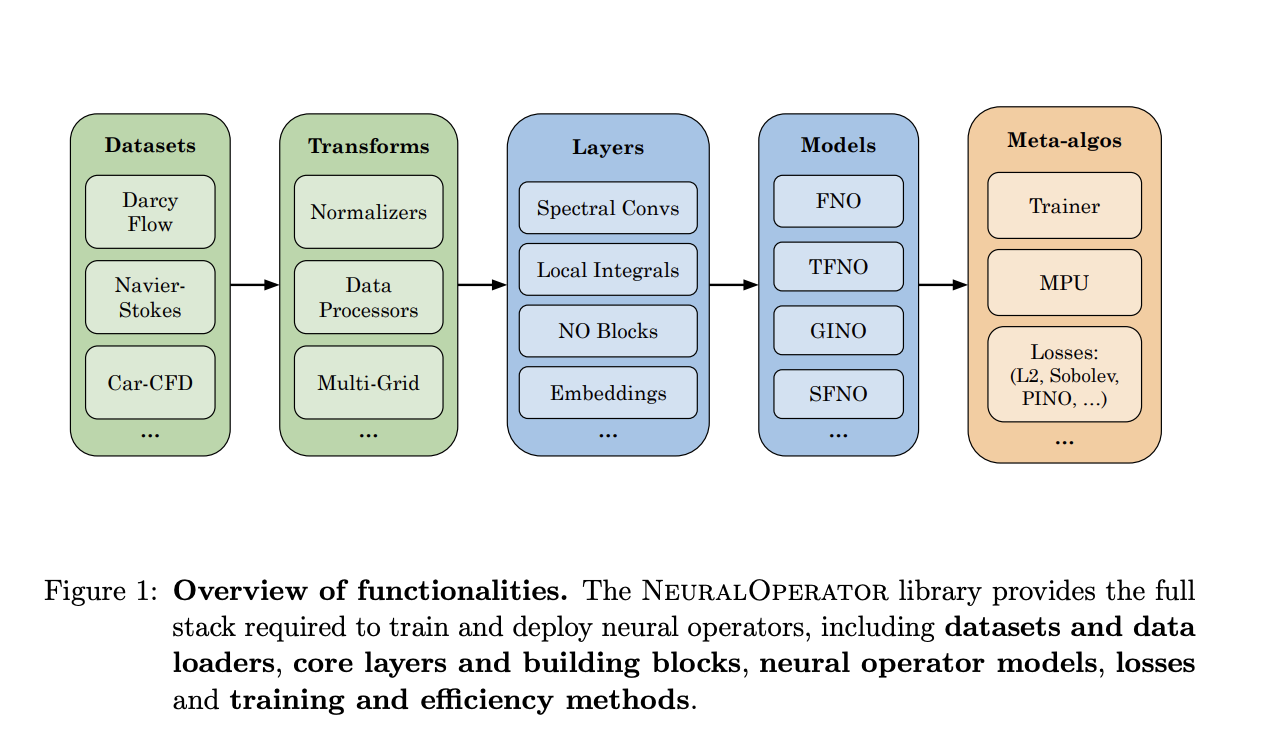
Operator Learning: A Game Changer in Scientific Computing
Operator learning is a groundbreaking method in scientific computing that creates models to map functions to other functions. This is crucial for solving partial differential equations (PDEs). Unlike typical neural networks, these mappings work in infinite-dimensional spaces, making them ideal for complex scientific problems like weather forecasting and fluid dynamics.
Challenges in Traditional Scientific Computing
Scientific computing has struggled with solving PDEs using traditional numerical methods, which often require breaking down continuous problems into smaller parts. While high-resolution meshes provide accurate results, they demand significant computational resources and time, making them impractical for large-scale simulations. Additionally, these methods lack flexibility across different discretizations, creating a need for a more adaptable solution.
Introducing NeuralOperator
Researchers from NVIDIA and Caltech have developed NeuralOperator, a new Python library that tackles these challenges. Built on PyTorch, it allows users to solve PDE problems without being limited by discretization. This tool is user-friendly for both beginners and advanced users, emphasizing flexibility and adaptability across various resolutions.
Key Features of NeuralOperator
- Generalization Across Discretizations: Models can adapt to different data resolutions seamlessly.
- Efficient Resource Use: Techniques like tensor decomposition and mixed-precision training reduce memory usage while maintaining accuracy.
- User-Friendly Design: Suitable for both newcomers and experienced researchers, facilitating quick experimentation.
- Wide Application Range: Supports datasets for equations like Darcy Flow and Navier-Stokes, applicable in various scientific fields.
- Advanced Techniques: Incorporates cutting-edge methods like FNOs, TFNOs, and GINOs for enhanced performance.
Proven Results
Tests on benchmark datasets show that NeuralOperator significantly outperforms traditional methods, achieving less than 2% error rates in fluid dynamics predictions. It also supports distributed training for large-scale operator learning and offers features like mixed-precision training for efficient data handling.
Conclusion
NeuralOperator presents a robust solution to long-standing challenges in scientific computing. Its ability to manage infinite-dimensional function mappings and its efficient computation make it an essential tool for solving PDEs. With its modular design, it lowers barriers for new users while providing advanced features for seasoned researchers, promising to advance the field of scientific machine learning.
For more information, check out Paper 1, Paper 2, and the GitHub Page. Follow us on Twitter, join our Telegram Channel, and connect with our LinkedIn Group. Don’t forget to join our 60k+ ML SubReddit!
Transform Your Business with AI
Stay competitive by leveraging NeuralOperator and discover how AI can transform your operations:
- Identify Automation Opportunities: Find key customer interaction points that can benefit from AI.
- Define KPIs: Ensure your AI initiatives have measurable impacts on business outcomes.
- Select an AI Solution: Choose tools that meet your needs and allow for customization.
- Implement Gradually: Start with a pilot project, gather data, and expand AI usage wisely.
For AI KPI management advice, connect with us at hello@itinai.com. For ongoing insights into leveraging AI, follow us on Telegram at t.me/itinainews or Twitter at @itinaicom.
Explore how AI can enhance your sales processes and customer engagement at itinai.com.



























